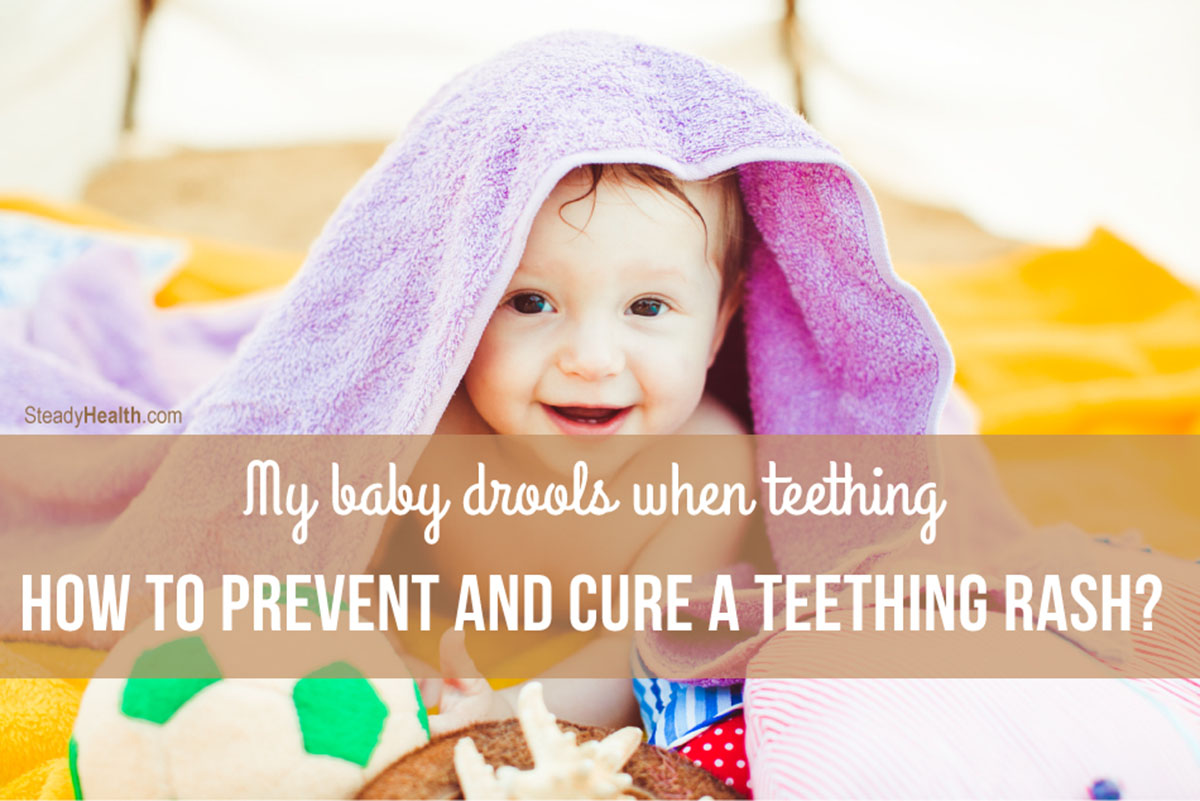How to know if my baby is teething?
You’ll definitely know when the time comes. From waking up a hundred times during the night, and being extremely irritable, to diaper and facial rash — the symptoms may vary among babies, but you’ll get the hang of it. [1]
Teething stimulates drooling and most babies drool a lot! The tooth eruption stimulates the salivary reflex so the result is hypersecretion of saliva. Drooling happens because there’s no teeth to serve as a dam, and because baby’s ability to swallow is limited [2]. Salivary glands start working when your baby is between two and three months old, so this can cause drooling even before the teething process starts.[3]
Some babies drool so much from the teething pain that it's causing a rash on their faces — on the cheeks, chin, and even the neck and chest area. Due to prolonged contact with saliva, extra bacteria appear and cause the skin to become red and itchy. Drool rash appears in form of small red bumps and slightly raised patches on the skin, sometimes with chapped appearance.

How to prevent drool rash
Keep your baby’s face clean and dry
Water is the most effective prevention against the rash. Wash your baby’s face and the folds of her neck often. If you’re not anywhere near a faucet, dampen a clean cloth with water and wipe away the drools. Use gentle pressure to avoid irritating a baby’s sensitive skin.
Apply some barrier cream
Applying your favorite barrier cream will reduce contact between saliva and your baby’s gentle skin (barrier cream also helps with the chapped, dry, and sore skin if the rash has already appeared).
Coconut oil is a good and natural way to hydrate the skin, offers relief for several forms of skin rash, including eczema [5], but not all babies and skin types react well to oily formulations. There’s no way of knowing unless you try! Coconut oil is considered safe for your baby’s sensitive skin, but don’t give it by mouth as medicine. [6]
Be careful with petroleum jelly
Many parents swear by Vaseline (petroleum jelly). Vaseline is found to be an effective treatment for babies who are at high risk of developing eczema. [7]
When properly refined, petrolatum poses no health risks, but it could potentially be contaminated with polycyclic aromatic hydrocarbons, or PAHs — byproducts of organic material combustion. Vaseline petroleum jelly is triple-purified and considered as non-carcinogenic, but most things that we rub onto the skin are absorbable, so find something that you don’t mind entering your baby’s system. [8]
Use a bib
You can prevent rash from spreading to your child’s chest by using a bib, as the best way of preventing drool rash is by keeping the area dry as much as possible.
How to cure your baby’s rash
Avoid rubbing
Never rub saliva off your baby’s chin — make sure to remove it by gently patting the area around the mouth. Physical friction can worsen the rash, and not only this — rubbing the irritated skin hurts so your baby might even cry. [9, 10]
Change sheets often
During the night, your baby’s sheet may become wet due to the drooling, and this can irritate his skin even more. Make sure he’s not sleeping on a wet surface. Place an absorbent mat under his sheet if needed, and change the sheet as soon as it becomes too wet.
Again — apply some cream
Cover the whole rashy surface with the hypoallergenic lotion and rub it in so none of the lotion or cream can get onto your baby’s hands and into her mouth. The cream serves as a barrier between the rash and the irritating drool. Make sure that you discuss the best lotion options with your pediatrician. It’s important that the product is made especially for babies and is safe to use.
In conclusion
Drool rash may be annoying and ugly-looking, but it is not serious and probably won't require additional treatment except for what you can provide at home. It’s okay to observe the rash for couple of days before calling the doctor. In most cases, it will go away soon if you apply the tips mentioned above.
Keeping your baby’s skin clean and dry as much as possible and applying antibacterial lubricant is enough in most cases, just don't rely on lubricant only, as it may trap bacteria in the pores.
- Photo courtesy of SteadyHealth.com


Your thoughts on this